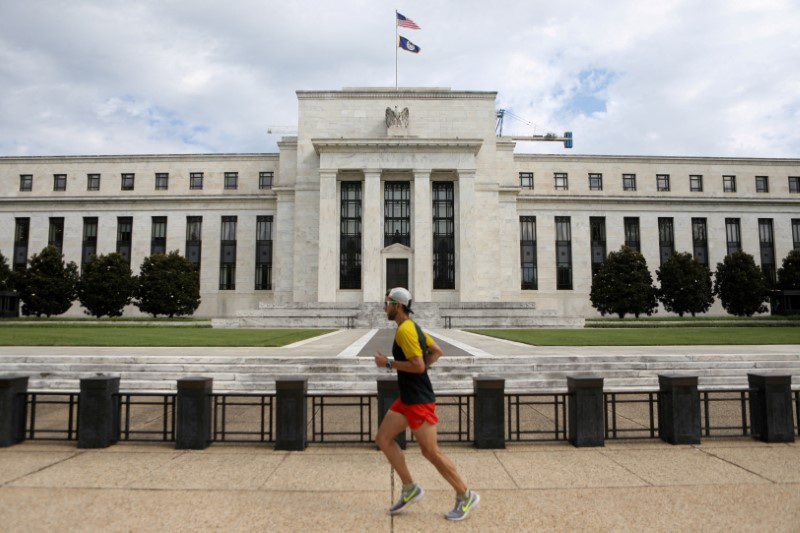(Reuters) -The U.S. central bank held its benchmark overnight interest rate steady in the 5.25%-5.50% range at the conclusion of its July 30-31 policy meeting, but since then Federal Reserve Chair Jerome Powell has declared “the time has come for policy to adjust,” signaling that rate cuts are likely to begin at the Sept. 17-18 meeting.
Just what size of a reduction – 25 basis points or 50 – will hinge on data between now and then.
Among the key statistics the U.S. central bank is watching:
JOB OPENINGS (Released Sept. 4; next release Oct. 1):
Most Fed officials in the last couple of months have turned their primary attention from inflation to the job market, which this summer began exhibiting clear signs of weakening.
That shift in focus was further validated by data showing job openings in July were the lowest in more than three years, according to the U.S. Labor Department’s Job Openings and Labor Turnover Survey (JOLTS). Moreover, the ratio of vacant jobs to each unemployed person fell to 1.1-to-1 and is now lower than its average in the 12 months preceding the COVID-19 pandemic.
Fed officials may also voice concern about the rise in layoffs reflected in the report. The recent rise in the unemployment rate had largely been seen as a result of an increase in the size of the workforce, with outright job cuts remaining low … until now. The JOLTS data showed layoffs totaled 1.76 million in July, the most since March 2023.
The chances of the Fed starting out with a 50-basis-point rate cut this month rose to nearly even after the data.
INFLATION (PCE released Aug. 30; CPI released Aug. 14; CPI release Sept. 11):
The personal consumption expenditures price index the Fed uses to set its 2% inflation target came in slightly softer than forecast in July, with an annual increase of 2.5%, the same as in June. The core index excluding food and energy costs was also slightly lower than forecast at 2.6%, also unchanged from the month before.
But it is the month-on-month rates starting in April that underpin Fed officials’ growing confidence that inflation is on its way back to the target in a sustainable fashion, allowing them to turn their focus to protecting the job market.
The headline monthly rate in July was 0.2%, as was the core rate. Since April, when readings softened after a bump up in the first quarter of the year, the unrounded headline rate has averaged 0.12% and the core has averaged 0.17%, both of which annualize essentially to rates at or just below the Fed’s target.
“With inflation on track to moderate back to the 2% target, the Fed is more free to focus on the health of the economy,” Michael Pearce, deputy chief U.S. economist at Oxford Economics, wrote in a note.
EMPLOYMENT (Released Aug. 2; next release Sept. 6):
U.S. firms added an underwhelming 114,000 jobs in July, and revisions to the prior two months knocked 29,000 positions from the previously estimated number of payroll jobs. That pushed the three-month average total payroll growth down to 170,000, below the level typical before the COVID-19 pandemic.
The unemployment rate also rose to 4.3%, which could heighten fears that the labor market is deteriorating and potentially making the economy vulnerable to a recession.
The number of people in a job or looking for work grew. Government data in late July showed the slowing of the labor market is being driven by low hiring, rather than layoffs, with hires dropping to a four-year low in June.
Average hourly wages rose 3.6% in July compared to a year ago, versus a 3.8% annual increase in June. The Fed generally considers wage growth in the range of 3.0%-3.5% as consistent with its 2% inflation target.







